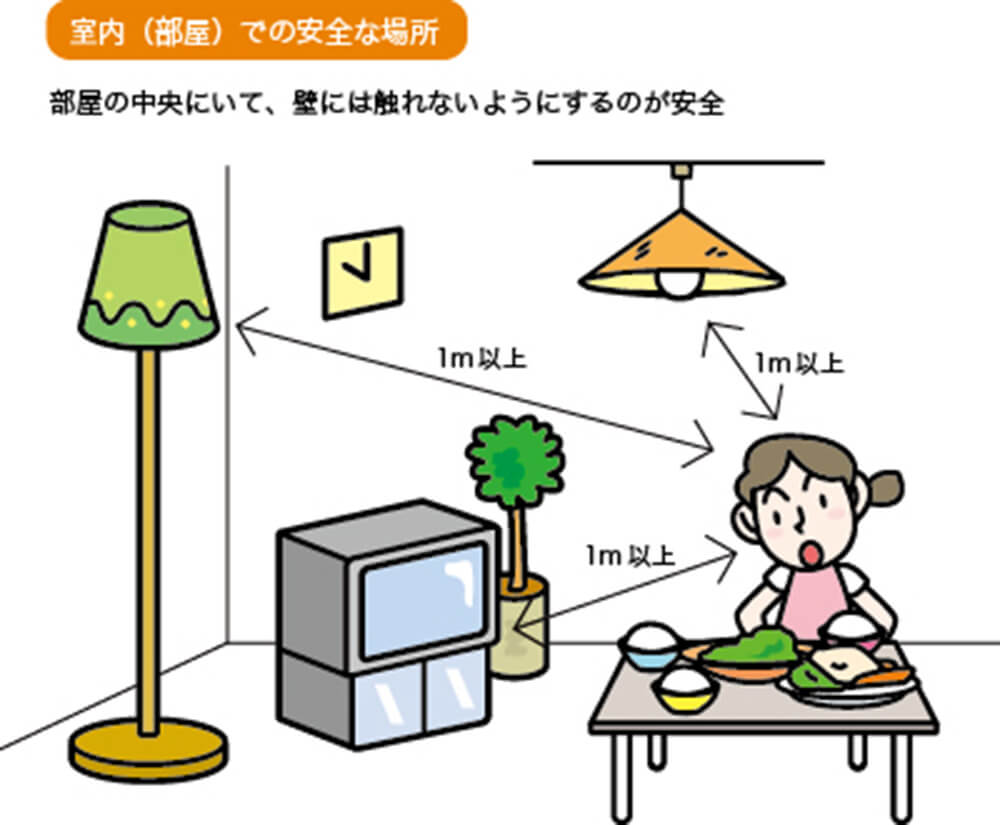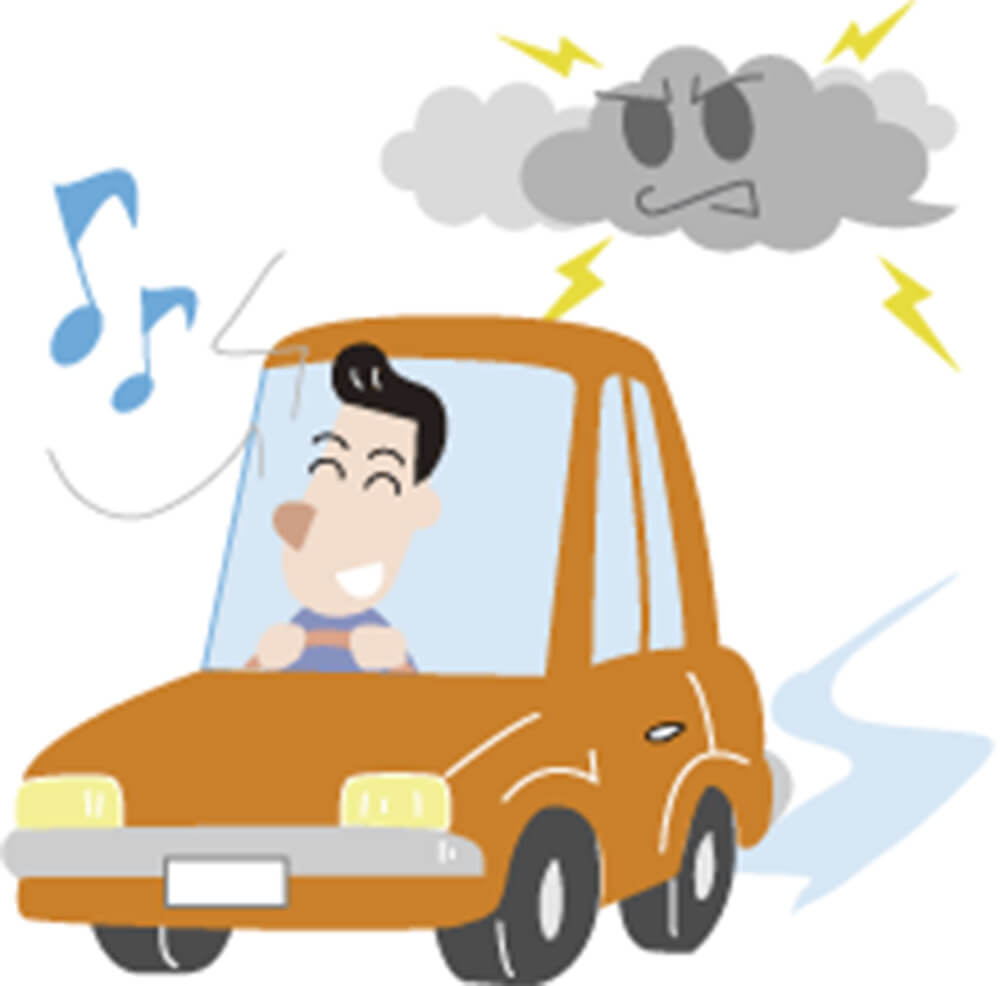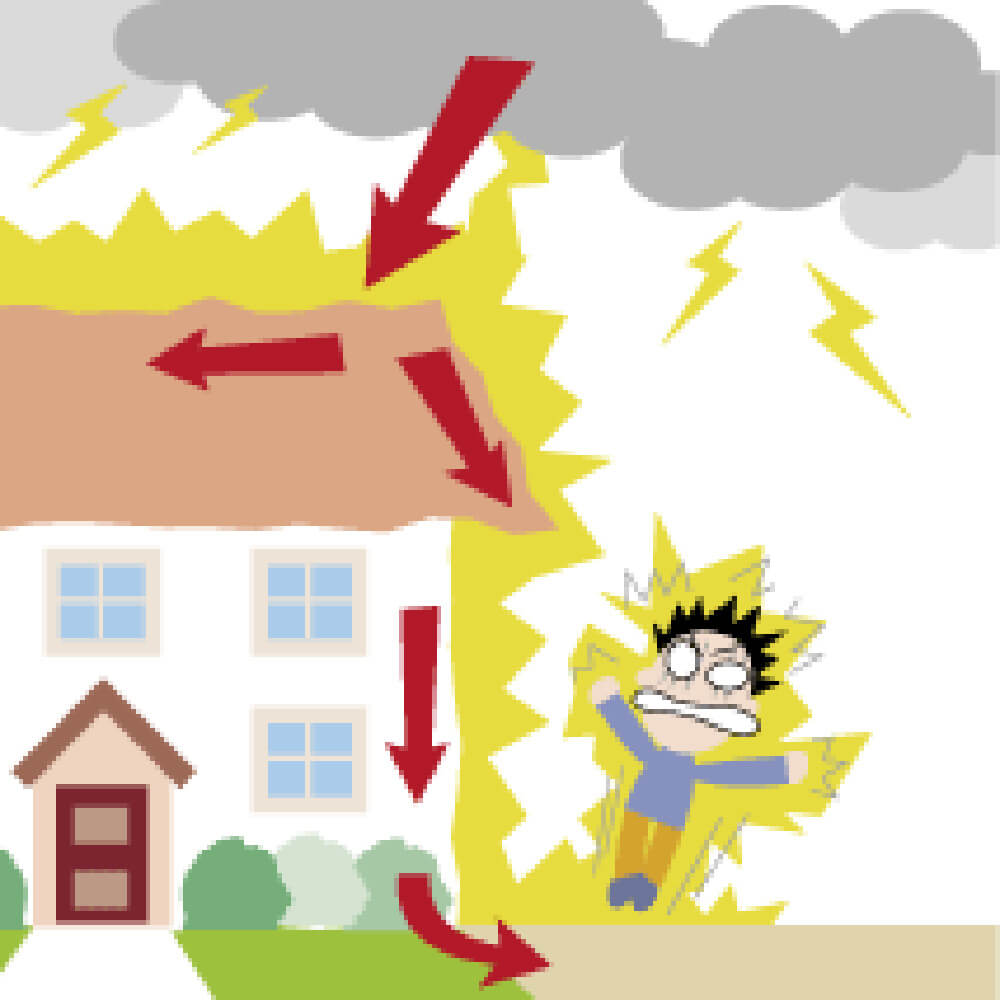It is safe to evacuate inside reinforced concrete buildings and wooden structures (but tents and temporary huts are dangerous). If lightning strikes a building directly or nearby, the electricity from the lightning may enter the building through power lines, telephone lines, or metal objects such as water pipes, and discharge onto nearby people. You should evacuate to the center of the room, at least one meter away from all electrical equipment, ceilings, and walls.

It is best to evacuate inside a building, but if there are no buildings around, evacuate inside a car. Cars, trains, and metal ships that are entirely covered with metal are safe inside. Avoid touching metal parts because the electricity from the lightning will flow through the metal surface to the earth.

If lightning strikes a tall tree, there is a possibility of being struck by lightning from the side, so stay away from tall trees. Try to evacuate to a building or car as soon as possible.
Wherever you take shelter, you should stay in a safe place for at least 20 minutes after the sound of thunder is no longer visible.
When it starts to rain, it is easy to take shelter in the eaves of a nearby building, but eaves can easily become a pathway for electricity when lightning strikes a building. Electricity from lightning tends to flow on the surface of objects, and when lightning strikes a roof or other structure, it will try to flow from the roof to the wall, so if you are under the eaves, the electricity will try to flow, and if you are under the eaves, the electricity may fly to your body.
